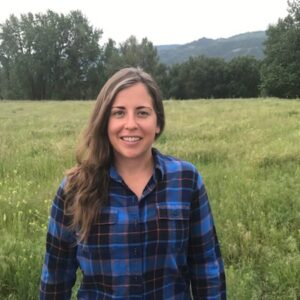Restoring fish habitat and protecting farm futures
If you have traveled Highway 82 between Wallowa and Lostine during the past year, then you’ve probably noticed some significant changes happening across hundreds of acres of roadside fields.
Miles of trenches have been dug and 16 pivots have been constructed as part of a large-scale water efficiency project on the Wolfe Family Farm. Completed in December 2017, this project is part of an even broader effort in the Grande Ronde River Basin to improve habitat for native Chinook and steelhead populations while maintaining the productivity of working lands. As early adopters of conservation programs, Woody and Megan Wolfe have worked with many local restoration partners, including The Wallowa Land Trust and the Nez Perce Tribe, to enhance conditions for native wildlife on their property.
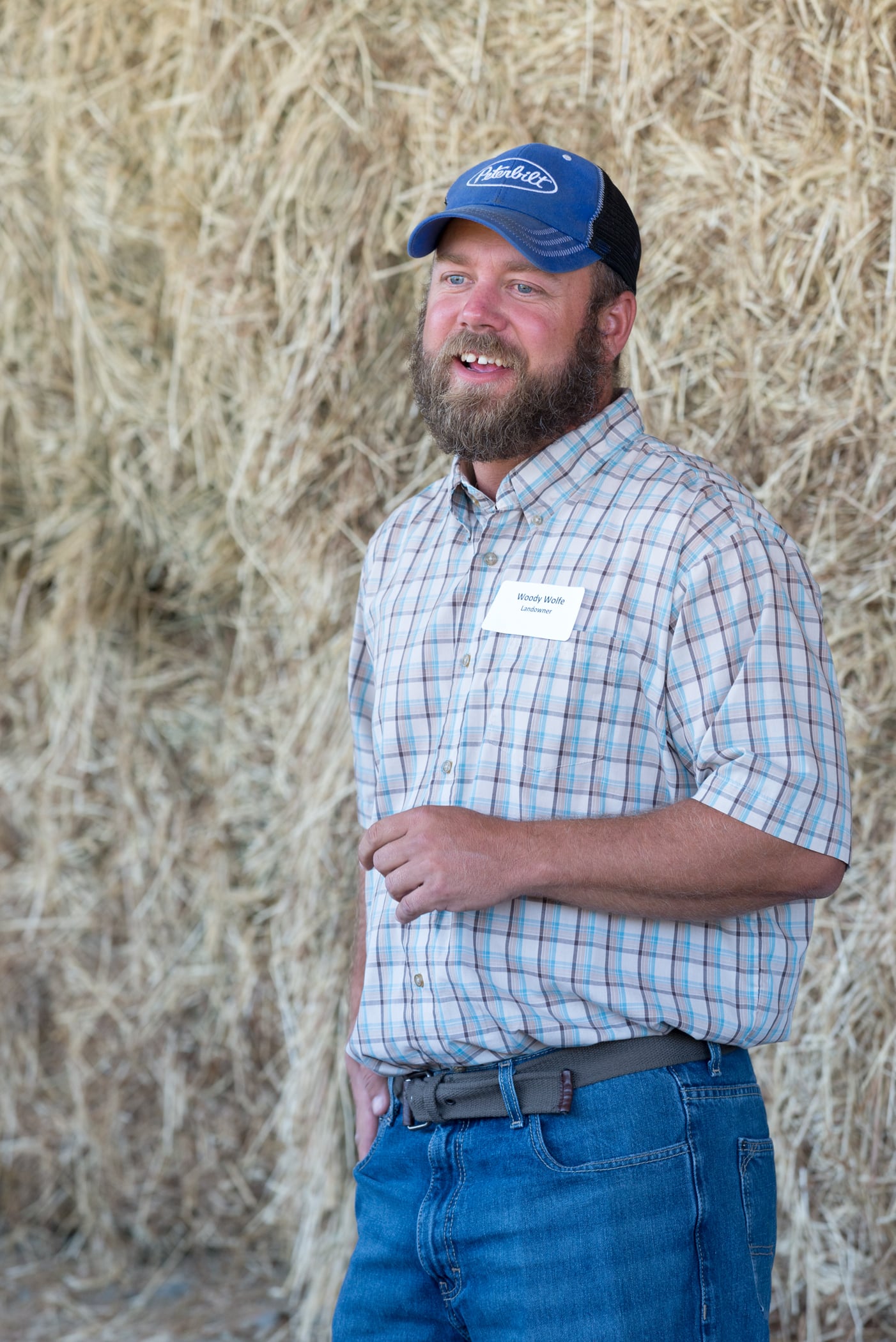
Woody Wolfe Photo Credit: Leon Werdinger
The Lostine River Conservation Project is their most recent conservation effort and was accomplished in partnership with the Oregon Water Resources Department (OWRD), The Freshwater Trust, The Columbia Basin Water Transaction Program and the New Perce Tribe.
The Lostine River is a snowmelt-dominated system with peak flows occurring in June and July and then declining precipitously starting in early August. Natural low flows coupled with significant irrigation withdrawals and diversion structures have created sometimes impassable conditions for Chinook during August and September. Since the early 2000s, the Lostine River has been the focus of efforts to increase late-season flows to facilitate passage of migrating Chinook.
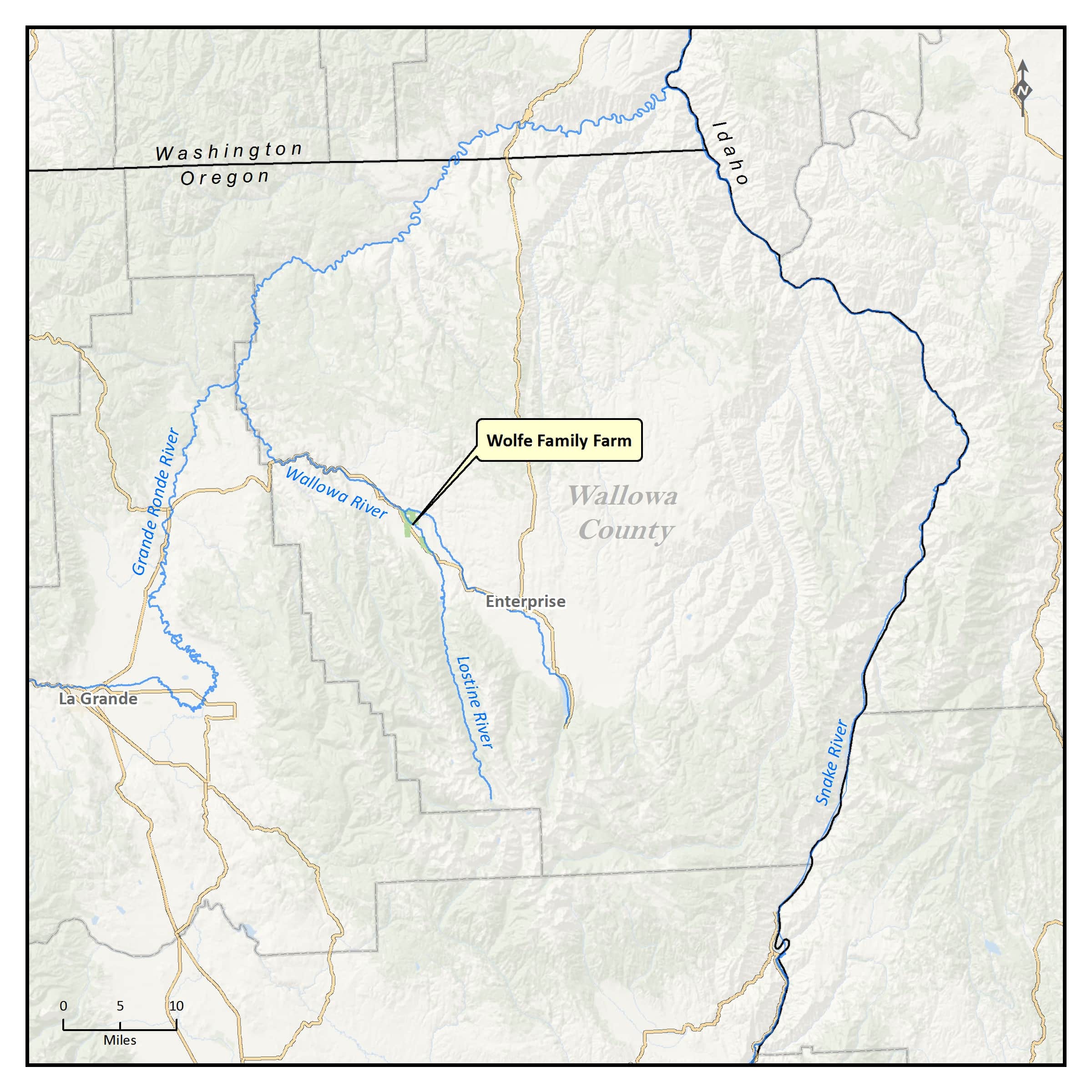
In 2016, The Freshwater Trust was awarded a $1.49 million grant from OWRD to support the conversion of 872 acres of predominantly flood-irrigated land to a pressurized pivot sprinkler system on the Wolfe Family Farm.
This conversion increased irrigation efficiency, agricultural production, and instream flows for Endangered Species Act-listed fish species in the Lostine River. The landowners contributed significant financial and in-kind support to match the grant funds, including excavating and installing more than 30,000 feet of mainline to serve the new pivots.
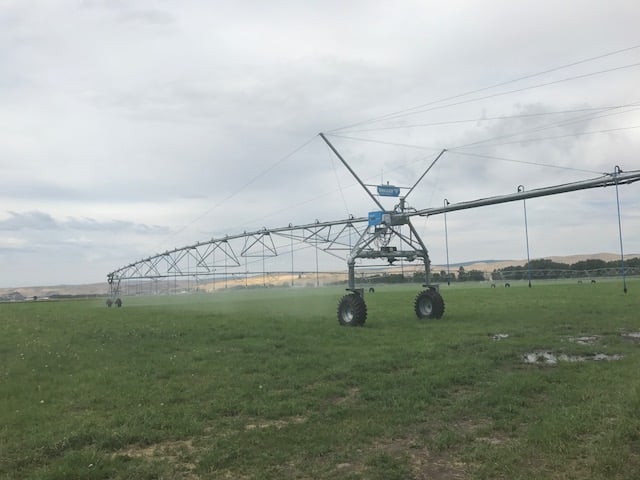
Pivot irrigation
The Wolfe family also worked with the Columbia Basin Water Transaction Program and The Freshwater Trust to permanently protect a portion of the conserved water instream and temporarily transfer some of their late season water during the 2016 and 2017 irrigation seasons.
By engaging in water transfer and leasing programs, the landowners were able to help finance portions of the project not covered by the OWRD grant.
As a result of the Lostine River Conservation Project, 3.8 million gallons of water were conserved, resulting in 6.6 cubic feet per second in the Lostine River and more than 60 acres of previously unirrigated land receiving water rights for new production.
In order to facilitate the transfer of conserved water instream and to new farm acres, the project utilized Oregon’s conserved water statute, which was passed in 1987. OWRD states that the intent of the statute is “to promote the efficient utilization of water to satisfy current and future needs both out-of-stream and instream. The statutes define “efficient utilization” as use without waste, upgrading of irrigation equipment to comply with modern irrigation practices, or other methods used to meet both current and future water needs at the least cost.”
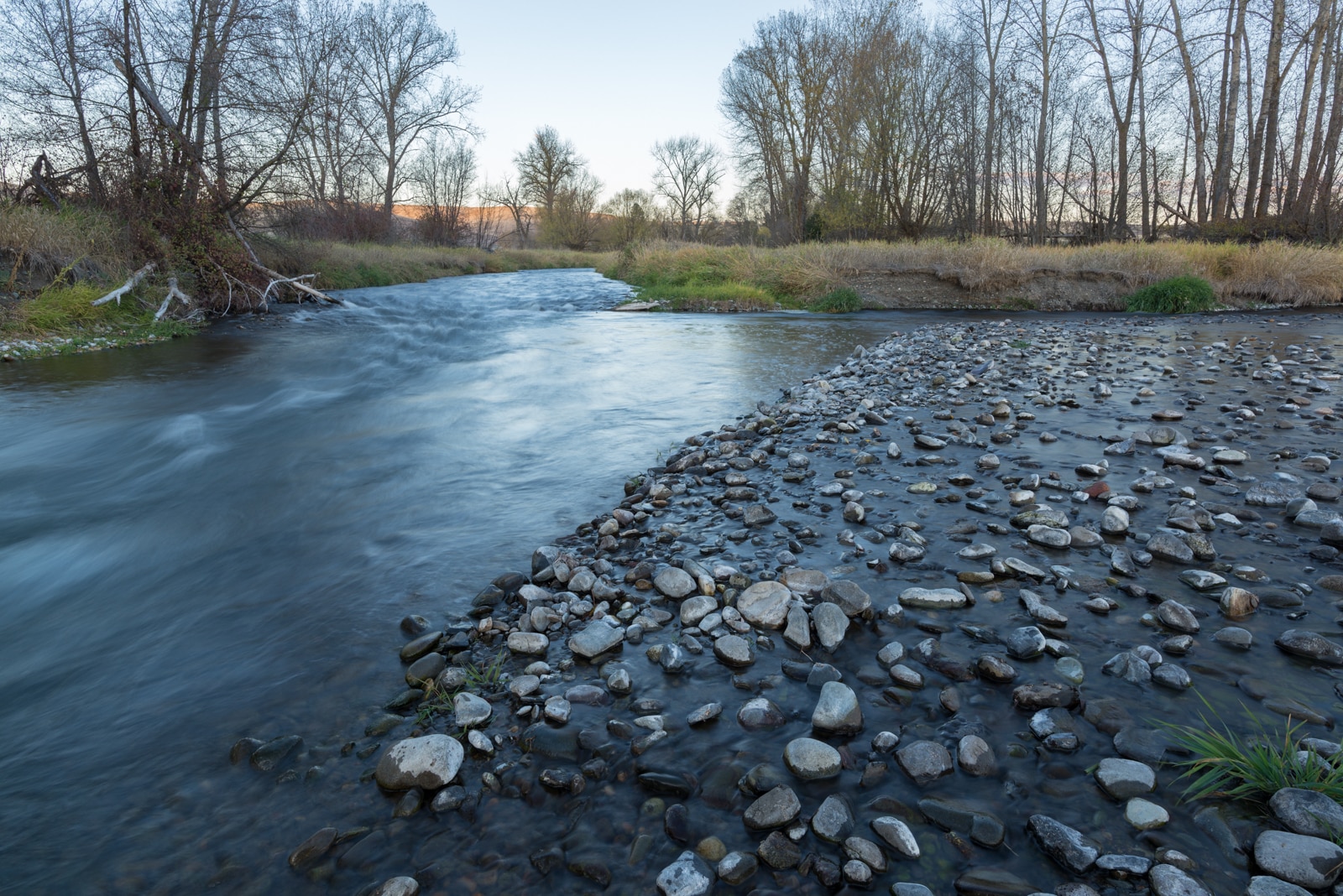
Confluence of the Lostine and Wallowa Rivers in Oregon's Wallowa Valley
The multi-faceted approach of the Lostine River Conservation Project effectively used the statute and public funding sources to facilitate habitat restoration that, while occurring on private land, has significant public benefit. In addition to the conserved water, formerly flood-irrigated acres that could not use pivot irrigation were converted to wildlife habitat, and the water rights will be transferred instream. In combination with the conserved water and a downstream point of diversion associated with the project, this land conversion effort will result in the protection of up to 11 cubic feet per second flow in the river for the benefit of aquatic species.
Hear from several of the farmers we work with in Oregon.
This project builds on the innovative conservation work that has already taken place on the Wolfe Family Farm.
Past projects include an easement with the Wallowa Land Trust that protects 463 acres of land and 3.5 miles of the Lostine and Wallowa Rivers and provides a separate three-acre easement allowing the Nez Perce Tribe to operate a fish weir on the Lostine River.
Since 2000, the Nez Perce Tribe has invested tens of millions of dollars in restoring the Chinook run on the Lostine River. The weir and associated facilities established by the Bonneville Power Administration by a perpetual easement on three acres owned by the Wolfe Ranch have been essential to their efforts. The section of the Lostine River that flows below the weir provides for a significant tribal fishery. All spring Chinook harvested by tribal fisherman on the Lostine River comes exclusively from this section of the river. By improving habitat conditions for Chinook and steelhead in this critical area, the project helped ensure that a culturally and economically significant tribal fishery remains viable.
As sixth-generation Wallowa County farmers who depend on the land for their livelihood, Woody and Megan Wolfe are continuously looking to the future.
By investing in irrigation infrastructure upgrades in combination with innovative grazing, cover cropping, and crop rotation techniques, the Wolfe Ranch is improving production, building resiliency, and promoting sustainable farming for generations to come. The Lostine River Conservation Project demonstrates that it is possible to engage in conservation without jeopardizing the integrity of agricultural production that is the backbone of rural communities.
This article originally appeared in Ripples in the Grande Ronde, the newsletter for the Grande Ronde Model Watershed
March 7, 2018Enjoying Streamside?
This is a space of insight and commentary on how people, business, data and technology shape and impact the world of water. Subscribe and stay up-to-date.
Subscribe- Year in Review: 2023 Highlights
By Ben Wyatt - Report: Leveraging Analytics & Funding for Restoration
By Joe Whitworth - Report: Transparency & Transformational Change
By Joe Whitworth - On-the-Ground Action – Made Possible By You
By Haley Walker - A Report Representing Momentum
By Joe Whitworth

